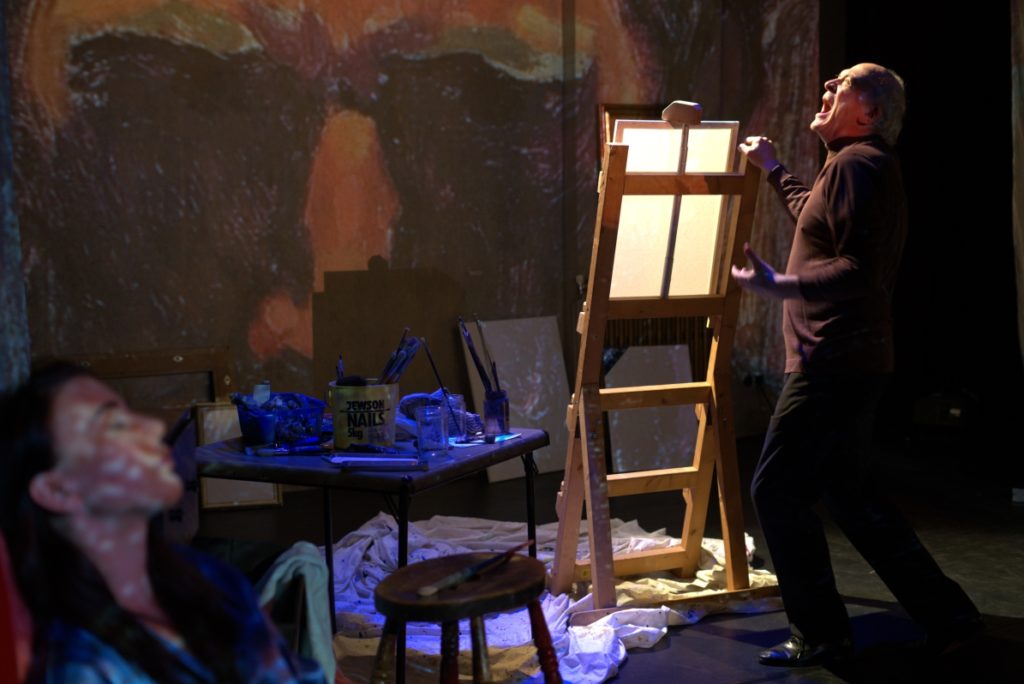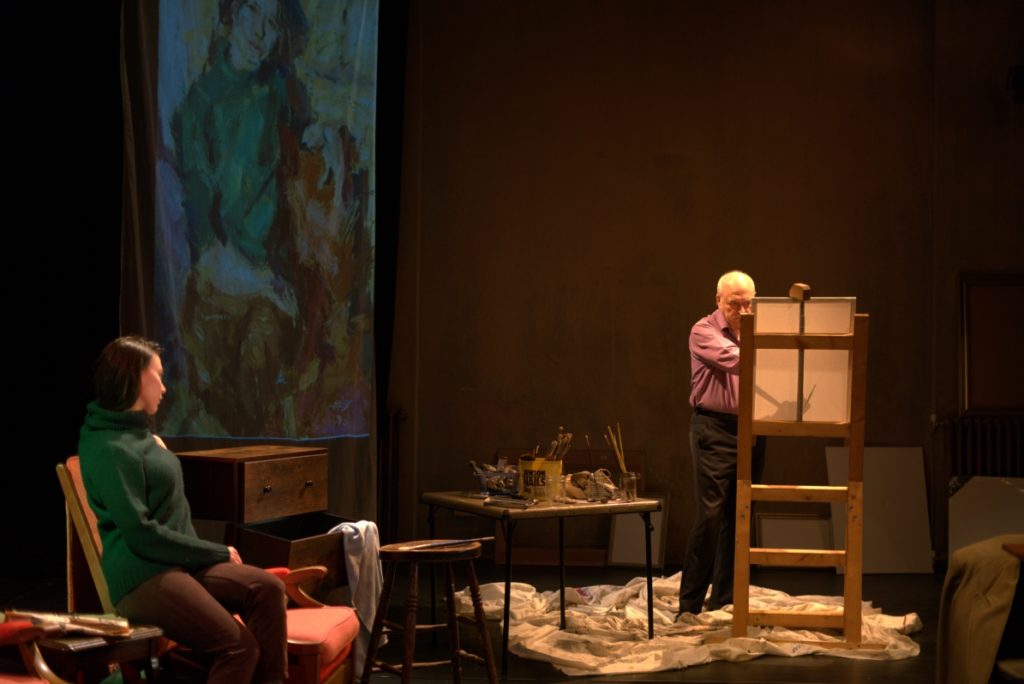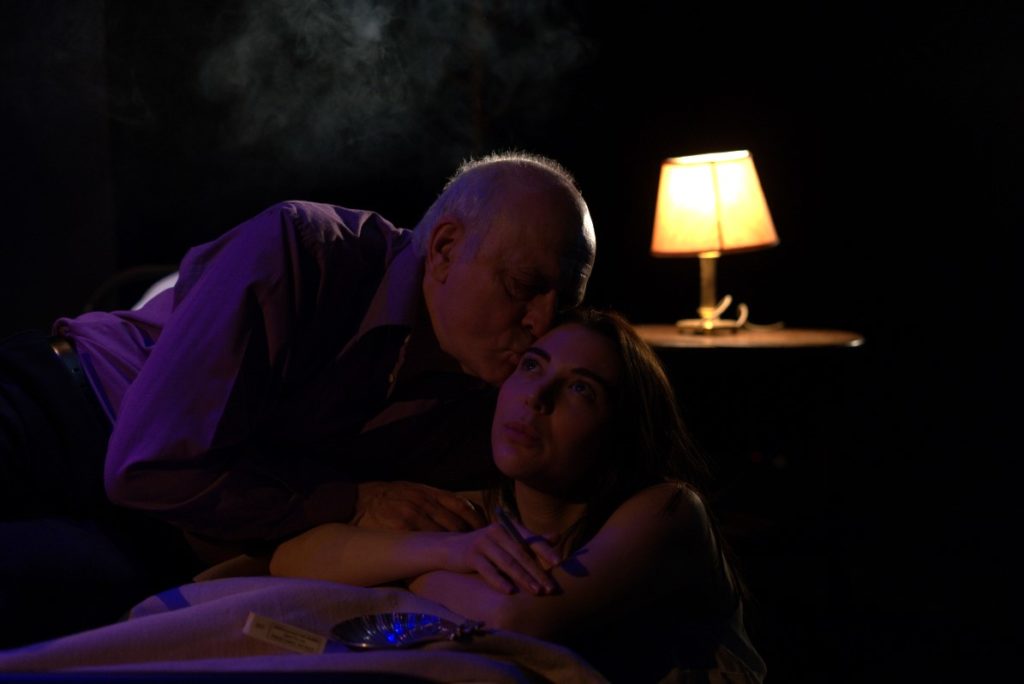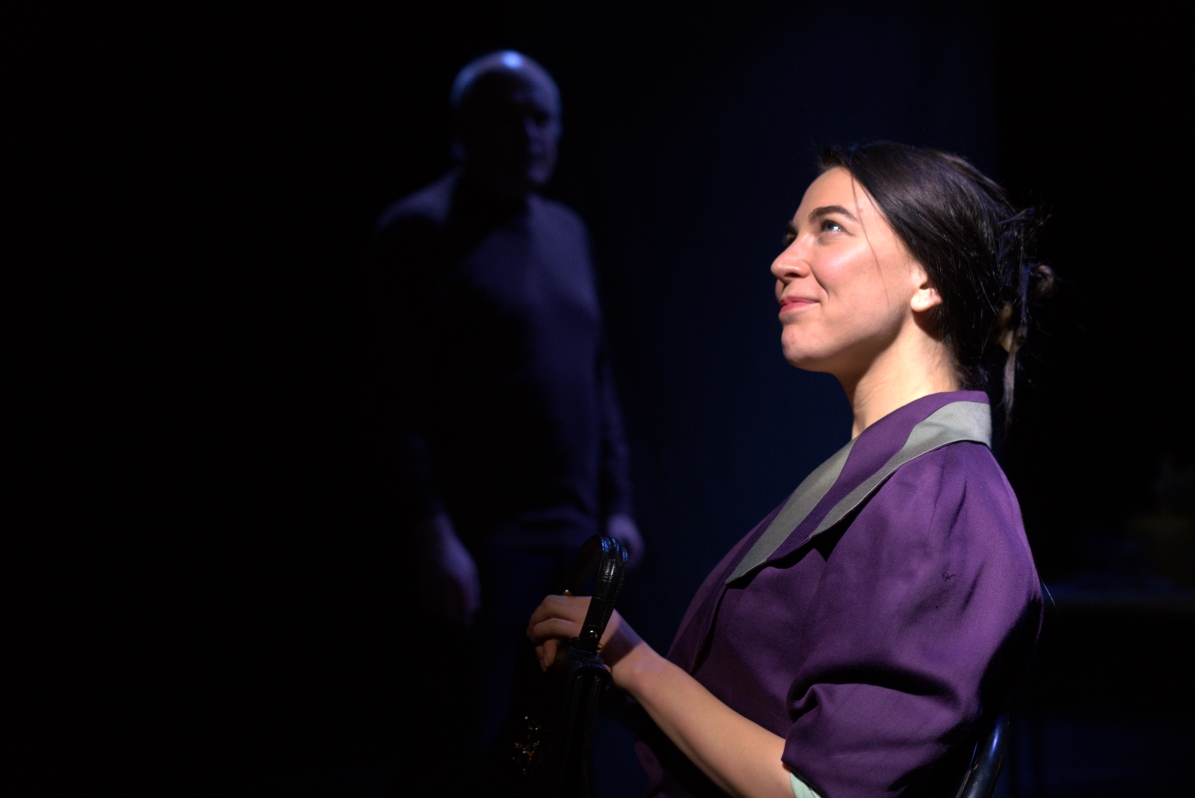The Girl In The Green Jumper – Playground Theatre, London
A new play by Gail Louw, The Girl in the Green Jumper tells the story of Renske Mann’s life with artist Cyril Mann and is paired with an exhibition of his work at Piano Nobile.

An Artistic/Theatrical Two-For-One
Last night I had a unique experience which brought together the two main threads of the Salterton Arts Review: art and theatre. The initial invitation was intriguing. Renske Mann, wife of the late artist Cyril Mann (1911-1980) invited me to see an exhibition of his work at West London Gallery Piano Nobile, followed by a play based on her autobiography of her time with him. An offer I couldn’t refuse!
So we first headed to Piano Nobile to see their exhibition Cyril Mann: The Girl in the Green Jumper. I wasn’t previously familiar with Mann’s work, but am glad I had the opportunity. The exhibition is well-curated, bringing together a number of self portraits with nudes, still-lifes and other works. Including, of course, the girl in the green jumper. Renske herself was thus present in both painted and physical form, an energetic host with a vivacity belying her years.
Mann’s works show a remarkable range. The self portraits, in particular, are a space for experimentation with line, light and forms. But there is a consistent focus on light. A late work on paper extends planes of light out past the artist’s face, giving him an extraordinary glow. Piano Nobile give the Canadian Impressionists as a source of inspiration. I can’t say I know much about their work either but if it’s much like this then I want to.
And so, with images of Mann’s paintings fresh in our minds, we headed to the Playground Theatre.

The Girl in the Green Jumper
Renske Mann’s autobiography has been adapted by Gail Louw. This is the third of four works in a Gail Louw season at the Playground. I must confess I have not read the book (yet) so cannot comment on how faithful an adaptation it is. But given Renske’s close involvement, I’m guessing it gets the major things right.
The play is a two-hander, featuring Natalie Ava Nasr as Renske and Peter Tate as Cyril. It charts the length of their relationship, from their meeting after one of Cyril’s art classes in 1959 to their parting at his death in 1980. Psychologically it is very interesting, as the power balance shifts between them. As Renske comes into her power as a confident, professional woman, Cyril’s is waning as his health declines and his regrets overwhelm him.
Regrets mostly in not being better appreciated as an artist. Renske is steadfast in championing her lover and later husband’s artistic vision (which, given her continued care for his legacy, is still the case today). But Cyril’s regrets and declining mental health also made him a challenging personality and difficult person to live with. These difficulties, which included abusive behaviour, are not sugar coated in the play. The narrative is in fact refreshingly forthright. Even if at times it can be difficult to watch.

From Easel to Stage
I found Louw’s theatrical adaptation to be a strong one. She has an ear for dialogue, and the conversations between the two are naturalistic. At times they’re very funny. And I felt she created an insightful character in Cyril: someone who had such profound ability to really see things when it came to his art, and yet struggled to see Renske for the person she was, beyond her function in his own life and career. The play did run long when I saw it and I felt the advertised 105 minutes would have been enough to tell the story, but perhaps that was just press night timing.
There is also a simple yet very effective approach by Helena Hipólito to incorporating those artworks we saw earlier into the production. They are projected, onto canvases or backdrops, bringing scenes to life with the specific artworks produced in that moment. Having seen those artworks in the flesh mere hours before made the experience all the richer.
It can be risky to tell a complex story with the close collaboration of one of the subjects. But Renske’s honesty and Louw’s empathetic approach have created an interesting take on an artist/muse relationship. The twinned exhibition and play are a wonderful opportunity to both Cyril and Renske tell their story to an extent, and to get to know the girl in the green jumper on her own terms.
Salterton Arts Review’s rating: 4/5
The Girl in the Green Jumper on until 24 March 2024. More info here.
If possible, consider pairing your visit to the Playground Theatre with a stop at Cyril Mann: The Girl in the Green Jumper at Piano Nobile, 129 Portland Road. The exhibition is on until 22 March 2024. More info here.
Trending
If you see this after your page is loaded completely, leafletJS files are missing.

